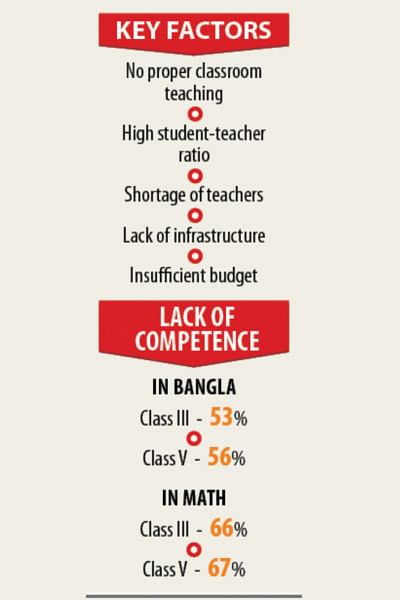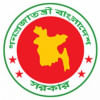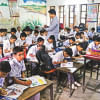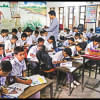Primary Education Quality: Long way to go

More than half of primary schoolkids do not have the expected level of competence in mathematics and Bangla, reveals a new government assessment, raising questions about the quality of the country’s primary education.
The National Student Assessment (NSA) found that 66 percent of class-III students and 67 percent of class-V students did not achieve the desirable level of competence in mathematics in their respective grades.
In Bangla, 53 percent of third graders and 56 percent of fifth graders could not gain adequate competence, shows the NSA 2017, published by the Directorate of Primary Education (DPE) in October this year.
There has been a debate over the quality of education over the last several years though pass rates in public examinations are going up every year.
Experts blame lack of proper classroom teaching, high student-teacher ratio, shortage of teachers, lack of infrastructure, and insufficient budget, for such a gloomy picture of primary education.
Students mostly rely on private tuition and coaching classes as concerns remain over the quality of classroom teaching-learning, experts said.
“Primary school teachers seriously lack quality and motivation to give proper lessons in the classroom. In many primary schools, teachers handle overcrowded classrooms,” said noted educationist Prof Siddiqur Rahman.
DPE conducted the survey on 28,402 students of class-III from 1,417 schools and 24,145 class-V students from 1,446 schools across the country last year.
For the Bangla assessment, students were asked to identify, interpret, and synthesise information showing their understanding of literary texts and their competence in spelling.
For maths, students were tested on their understanding of number properties and concepts, and units of measurement, among others.
The survey said learners who did not achieve the desired level of competence are still at the early stages of development as per the curriculum standards of their respective grades. They have not acquired sufficient knowledge and skills to be considered minimally successful in their curriculum demands, it said.
The NSA found that 38 percent of class-III students have proficiency in Bangla with only nine percent at the advanced level. In class-V, 36 percent of students in the same subject achieved proficiency and only eight percent were at the advanced level.
The picture was similarly poor in maths with 25 percent of class-III students having proficiency in maths and nine percent at the advanced level. Among class-V students, 24 percent had basic proficiency and only eight percent were at the advanced level in the same subject.
There are around 1.73 crore students at 1,34,147 primary schools, according to the latest DPE data.
“These findings show there is a question mark over the quality of primary education,” said Enamul Hoque, deputy director of Campaign for Popular Education (CAMPE).
He pointed out that teachers do not follow the teaching-learning process as prescribed in the curriculum. Moreover, many teachers are not qualified and motivated enough.
“In many cases, the number of students in a classroom is so large that a teacher cannot pay attention to individual learners. So, there is no special intervention for slow learners,” he said.
A lack of teachers is another big problem, he said.
Another DPE report found teacher shortage and absenteeism as further barriers to ensuring quality education.
According to the DPE’s Sector Performance Report 2017, 79 government primary schools had only one teacher while 721 such schools had two teachers. Some 7,764 schools were running with three teachers and 22,527 schools with four teachers, it said.
“A policy intervention is needed to ensure at least four teachers in a school. Otherwise, it is not possible to deliver quality education,” said the report.
As per the report, 6,546 government primary schools have only one and 2,809 have two classrooms, which hampers teaching and learning.
A 2015 CAMPE survey report found that 12.7 of government primary school teachers were absent on the day of the school visit in 2014.
Prof Siddiqur Rahman, also one of the chief consultants of the National Curriculum and Textbook Board that developed the existing curriculum, said it is the responsibility of the government to provide adequate number of teachers and arrange other facilities for a proper teaching-learning environment in classrooms.
The government needs to ensure proper monitoring of the academic atmosphere in primary schools, he suggested, stressing on developing the standard of classroom teaching-learning methods.
Primary and Mass Education Secretary Akram-Al-Hossain said the government is taking different steps to ensure quality education at the primary level.
“We are trying to identify weaker students to improve their education standard. We are also listing schools that are lagging behind in terms of students’ performance like reading, writing and mathematical abilities,” he said.
He admitted that classroom learning is still problematic as a teacher, in some cases, needs to take care of 100 students in a class.
Currently, 18,500 teaching positions are now lying vacant, said the secretary, adding that a shortage of teachers is a barrier to achieving competency.
“We are in the process of recruiting teachers. We are also planning to give special training to the teachers,” he said.

 For all latest news, follow The Daily Star's Google News channel.
For all latest news, follow The Daily Star's Google News channel. 








Comments